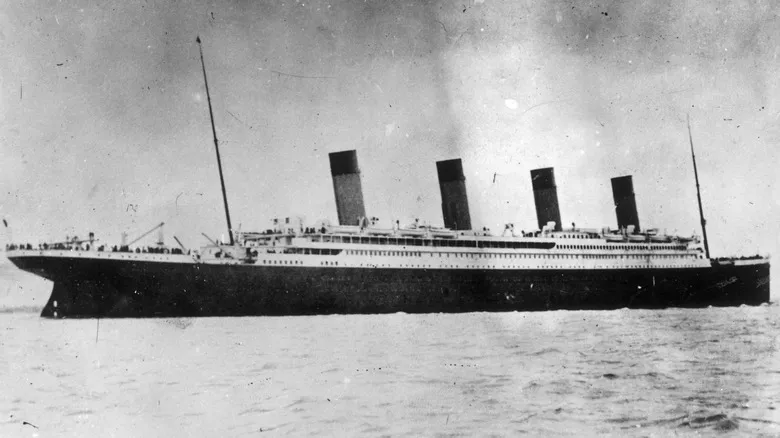Third-class fare
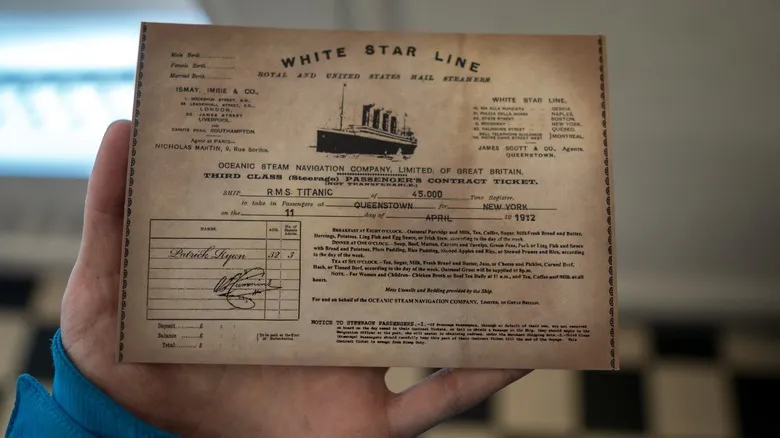
Approximately 710 third-class passengers were aboard the Titanic, with only 174 reported survivors. The ship collided with an iceberg at 11:40 p.m. on April 14, 1912, while many passengers were asleep, ultimately sinking around 2:20 a.m. This meant that for everyone on board, the evening meal was their last. Through menus and accounts from survivors, the meals served on the ship have been reconstructed quite accurately. While the food was simpler compared to first-class offerings, it was still regarded as somewhat luxurious by the working-class passengers, many of whom were immigrants heading to the United States in search of work.
For third-class passengers, the most substantial meal was served at midday, known then as dinner. This meal included roast beef, rice soup, fresh bread, boiled potatoes, biscuits, gravy, corn, fruit, and plum pudding (likely the British version, rather than the American type). Supper was served around 7 or 8 p.m. and consisted of gruel—a type of porridge—along with biscuits and cheese, marking the final meal for third-class passengers on the Titanic.
Second-class supper
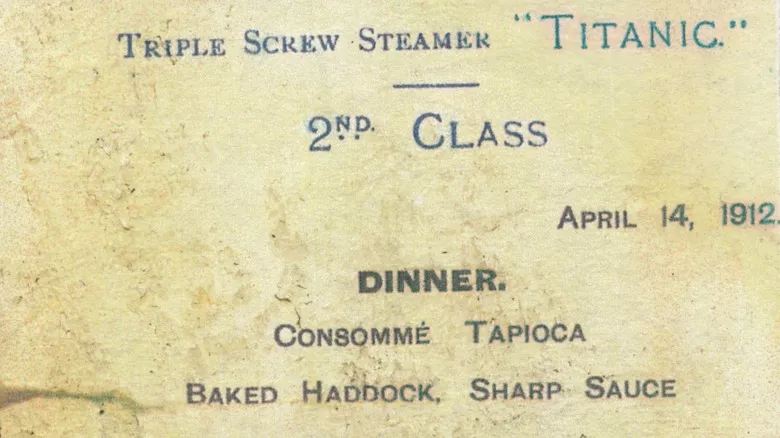
Examining the meal menus on the Titanic reveals insights into the cultural norms and dining habits of each class. For instance, the third-class menu featured a substantial midday meal, reflecting the routines of British working-class individuals. In contrast, the second-class menu was tailored for middle-class American professionals returning home, showcasing distinctly American dishes like roast turkey with cranberry sauce, baked haddock, green peas, rice, potatoes, consommé, tapioca, American ice cream, coffee, and more.
The 284 second-class passengers shared a galley with the first-class dining area, suggesting that some food items were likely prepared together. However, without the additional six courses and an extensive wine selection, their dining experience was far less extravagant than that of the first-class passengers, who enjoyed unparalleled luxury.
First-class finery
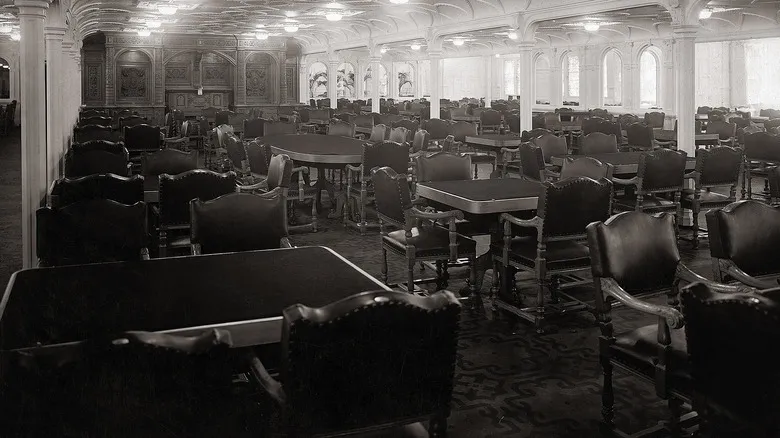
Some extraordinarily wealthy individuals were first-class passengers aboard the Titanic, including American businessman John Jacob Astor IV and Macy's co-owner Isidor Straus. They anticipated nothing short of excellence from the Titanic's maiden voyage, and that is precisely what they received.
The final meal enjoyed by first-class passengers on the Titanic was an elaborate multi-course affair, complete with exquisite wine pairings for each dish. A meticulously crafted menu guided diners through the experience: the evening commenced with an array of hors d'oeuvres and oysters, followed by a choice of soups—cream of barley or consommé Olga. Next, guests were treated to a salmon dish accompanied by mousseline sauce and cucumber, before selecting their main course from an impressive array of options. Choices included filet mignon, chicken lyonnaise, vegetable marrow farcie (a type of stuffed squash), lamb with mint sauce, roast duck, and beef sirloin, offering a remarkable variety. One could only hope the portions were modest, as they were accompanied by sides such as peas, carrots, rice, Parmentier (a potato dish), asparagus, foie gras (now banned in many countries), and even roast squab (pigeon) with cress. This feast was punctuated by a palate-cleansing cocktail and, presumably, several types of wine.
Finally, it was time for dessert, which catered to the tastes of the French and British elite. Selections included Waldorf pudding, chocolate and vanilla éclairs, French ice cream, and peaches in chartreuse jelly. One thing is certain: the first-class menus were crafted to ensure that no diner ever left the table hungry.
Recommended
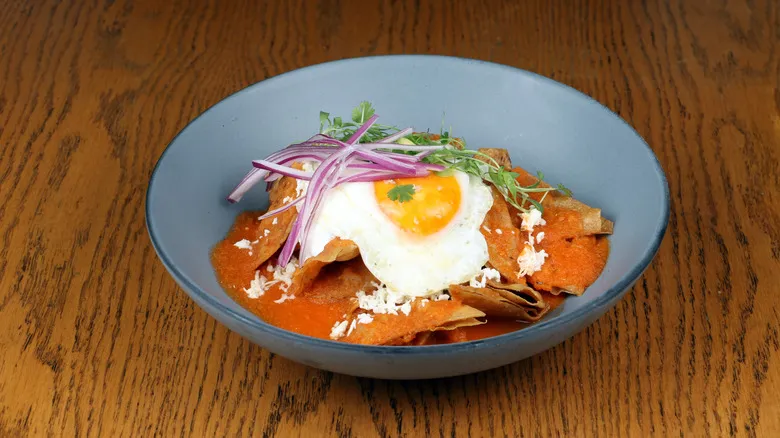
Migas Vs Chilaquiles: What's The Difference?
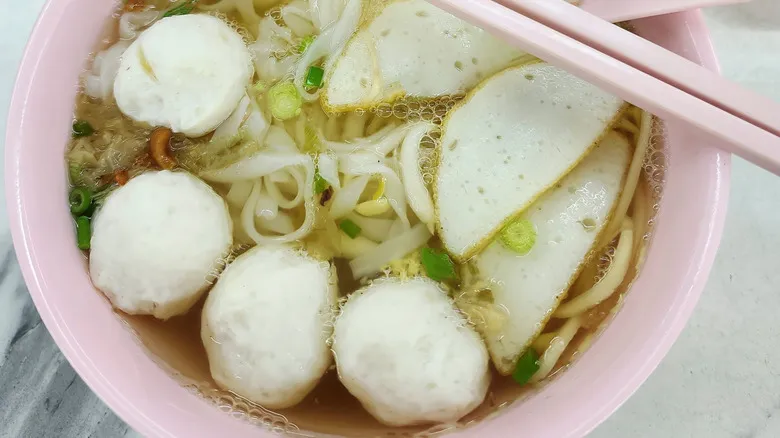
What Exactly Are Fish Balls Made Of?
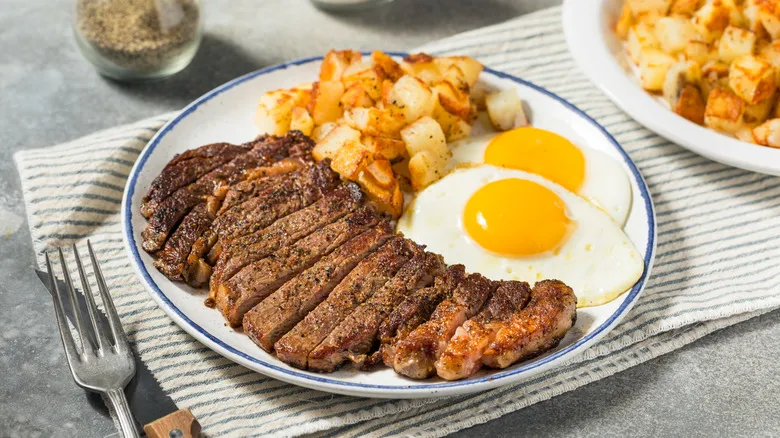
How Steak And Eggs Became A Breakfast Icon
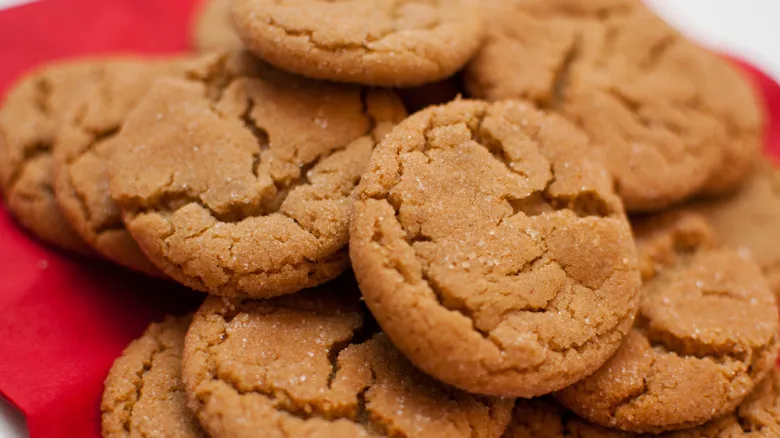
The Exact Difference Between Gingerbread And Ginger Snaps
Next up

